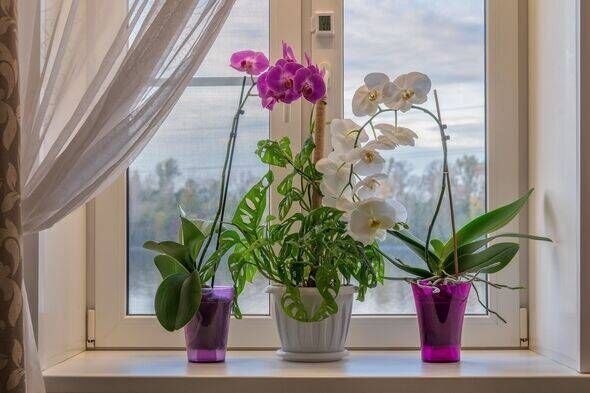Lifestyle
Simple Thermostat Adjustments Can Save Winter Houseplants

As temperatures drop and the heating systems begin to operate, indoor plants often face challenges that can threaten their health. Many plant enthusiasts notice their greenery struggling as the heating season commences, leading to issues such as wilting and browning leaves. According to plant expert Ollie Burgess, this decline is typically a response to the sudden changes in the home environment, rather than a reflection of poor plant care.
Houseplants are sensitive to their surroundings. When heating is turned on, the air becomes drier, leading to fluctuating temperatures and drafts that can stress plants. Adam Knight, Lead Engineer at the home heating and cooling company BOXT, emphasizes that it is not just the heat itself but how it circulates throughout the home that creates conditions detrimental to plant health. He explains, “Hot air rising from radiators or sudden cold from a window can create microclimate stress points.”
Recognizing these environmental changes is essential for keeping houseplants healthy during winter. Burgess notes that even minor temperature variations can make plants more susceptible to issues like browning leaves and curling. He advises plant owners to closely monitor their plants’ reactions to adjust their heating setup accordingly.
Key Adjustments for Healthy Houseplants
When radiators activate, three main changes occur that can affect plant wellbeing. First, humidity levels drop significantly. Warm air can hold more moisture, but heating a room without adding humidity often results in a reduction of relative humidity, which can plummet below 30% during winter. Many tropical plants, such as ferns and monsteras, thrive in humidity levels above 40%. Burgess remarks, “Brown tips are often the first sign that your plants are struggling with dry air.”
Moreover, plants positioned near windows may experience drafts at night and warm air during the day, creating an uncomfortable environment for them. Burgess explains, “A plant’s health is like a barometer for your home. If your monstera is browning or your fern is curling, that’s a red flag that the air is too dry for you as well.”
Incorrect placement of plants can exacerbate these issues. Radiators and underfloor heating vents can produce dry heat that harms delicate foliage. The general guideline for plant placement is simple: if you can feel warmth on your palm when placing it near a radiator, the plant is too close. A safe distance is typically between 50 cm and 1 m away. Grouping plants can also create a more humid microenvironment, and placing a dish of water and stones beneath a plant container can further aid in maintaining moisture levels.
Stable Conditions Are Essential
Maintaining a stable environment is crucial for plant survival during the heating season. Burgess highlights that running heating on a high, fluctuating schedule can cause significant stress to plants. He advises against temperature swings, noting, “Even swings from 16°C at night to 25°C during the day are enough to stress plants.”
For optimal plant health, aim to keep temperature changes within a range of 3-4°C. For instance, a comfortable 21°C when the home is occupied and no lower than 17-18°C overnight can create a favorable environment. Knight notes that a smart thermostat can help achieve this balance, allowing for a comfortable home while minimizing energy costs.
While central heating removes moisture from the air, it is important to ventilate regularly. Cooking, bathing, and even breathing can contribute to indoor humidity levels, which can accumulate if windows and doors remain closed. Knight recommends humidity levels of 45% to 50% during winter months, suggesting the use of a hygrometer to monitor conditions effectively.
Overwatering is another issue to watch for, especially in cooler, low-light conditions. Limp leaves often indicate excess water, while yellowing may suggest inconsistent watering or inadequate light. Burgess advises checking soil moisture before watering, as soil can dry more slowly in winter.
Certain plants are more resilient to indoor heating and can thrive with minimal care. For those seeking robust options, Burgess suggests selecting hardy varieties like the Snake Plant (Sansevieria), ZZ Plant (Zamioculcas zamiifolia), and Peace Lily. These plants are known for their ability to tolerate dry air and require less maintenance.
Kitchens and bathrooms retain more humidity, making them suitable for moisture-loving plants like ferns. Living rooms with fewer drafts work well for tougher varieties like succulents and snake plants. By choosing the right plants for the right locations, homeowners can create a more harmonious living environment.
Plants not only enhance indoor aesthetics but also improve air quality. Studies indicate that plants can raise indoor humidity through transpiration, alleviating symptoms of dry skin and irritation. Burgess reminds us, “Think of your plants as housemates. They need stable conditions to be happy—just like we do.”
With careful attention to heating, plant placement, and moisture levels, maintaining healthy houseplants during winter can be achieved without significant effort. By recognizing the signs of stress in plants, homeowners can ensure both their greenery and living spaces remain vibrant throughout the colder months.
-

 Business5 days ago
Business5 days agoUK to Finalize Stablecoin Regulations by 2026, Boosting Crypto Sector
-

 Business6 days ago
Business6 days agoU.S. and U.K. Target Cybercriminal Networks, Seize $15 Billion
-

 World5 days ago
World5 days agoMilitary Artillery Plan Sparks Safety Concerns Along California Highway
-

 Lifestyle5 days ago
Lifestyle5 days agoKISS OF LIFE’s Natty Dazzles in Micro-Shorts at Seoul Event
-

 Sports5 days ago
Sports5 days agoDomenico Doran’s Stellar Performance Leads Bishop Amat to Victory
-

 World6 days ago
World6 days agoTrump Signals Reluctance to Sell Tomahawk Missiles to Ukraine
-

 Business6 days ago
Business6 days agoCalifornia to Eliminate All Plastic Bags from Stores by 2026
-

 Entertainment5 days ago
Entertainment5 days agoLouisiana Senate Raises Concerns Over Medicaid Cuts Amid New Bill
-

 Entertainment6 days ago
Entertainment6 days agoUtah Communities Rally as Government Shutdown Strains Resources
-

 Health3 days ago
Health3 days agoUncovering the Hidden Link Between Knee Pain and Hip Issues
-

 Sports6 days ago
Sports6 days agoTrade Low, Trade High: Key NHL Players to Consider Now
-

 Science3 days ago
Science3 days agoAncient Dinosaur Discovery in Argentina Reveals Evolutionary Insights









